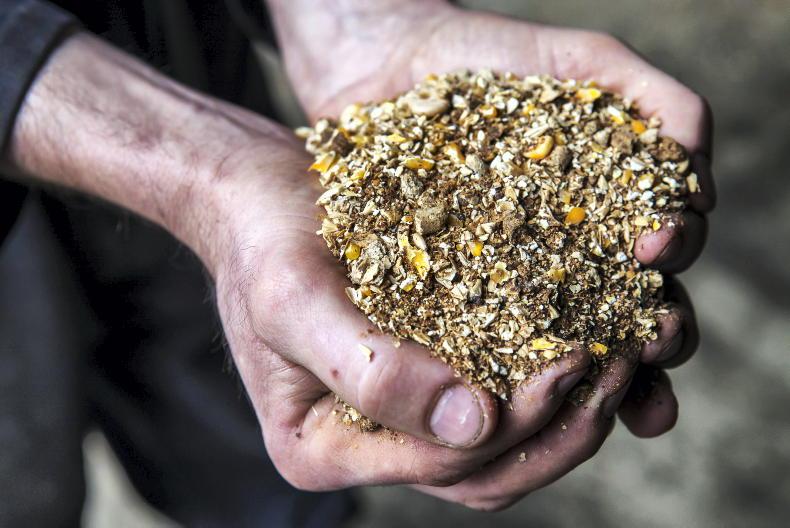With ration prices dropping in recent weeks closer to the €400/t mark, some reprieve from the increased costs farmers have been facing is welcome.
However, the real value, or poor value, in feed is seen in the ingredients and their percentage usage in the ration.
The key driver of production, be it meat or milk, is energy. While good-quality grass silage or alternative forage silage can go a long way towards being a complete animal diet, due to it being bulky in nature (especially low dry matter forages), there can be situations where food capacity of the animal from these forages hinders the production, meaning alternative feeds such as concentrates must be used.
Protein of feed should always be balanced against the forage that animals are on; a grass silage with 10% crude protein will require weanlings of 1kg to 1.5kg of a 20% crude protein ration, while being fed a 14% crude protein silage this requirement drops down to 12% crude protein ration. Feeding excess protein where it is not needed will actually cause animals to waste energy burning off this excess, so it is important that we have a handle on the nutritive value of forages through testing before compiling a ration.
High protein feeds do not mean higher energy, and cheaper rations may only appear cheaper, but from an energy content it can fall behind rations that are marginally dearer than it.
Energy density
The energy density of concentrate mixes for high levels of performance should be a minimum of 0.94 UFL/kg as fed for suckler cows and weanlings and a minimum of UFV of 0.92/kg as fed for finishing cattle. UFL is the unit used for suckler cows, UFV for finishing cattle.
Rations do not have to be overly complicated to work well. High energy feeds, such as maize meal or barley at high inclusion rates, will indicate a high energy level. Caution should be taken where high levels of barley are fed, especially for ad-lib feeding as there is a risk of acidosis, with no risk in feeding high levels of maize.
Despite its name leading people to believe that it is high in protein, soya hulls are a low protein (10%) ingredient but add fibre to a diet and can be useful where high levels of feeding (ad-lib) is being practised.
Beet pulp, a byproduct of the sugar industry, is a high energy feed that is a good source of digestible fibre, as is citrus pulp, though they both have low crude protein concentrations (10% and 6%, respectively.)
When it comes to protein sources, soyabean meal is the gold standard, ranking high in energy and by-pass protein content, with a crude protein of 48%. Limits on soyabean inclusion will be based on cost and protein requirements. Maize distillers are low in protein (25%) but are still a high energy feed and can be home produced as opposed to imported soyabean meal. Maize gluten feed is slightly lower again in protein (20%) and is also a lower energy feed.
Mineral status
Due to various reasons, mills will add varying levels of ingredients based on price, availability or limits on inclusion rates to avoid digestive upsets.
When discussing a ration with a merchant, the mineral status should always be asked.
Where ration is being fed to white faced sheep breeds (Texel, Cheviot or Charollais) copper should not be part of the mineral concentration to prevent toxicity.






 This is a subscriber-only article
This is a subscriber-only article










SHARING OPTIONS: